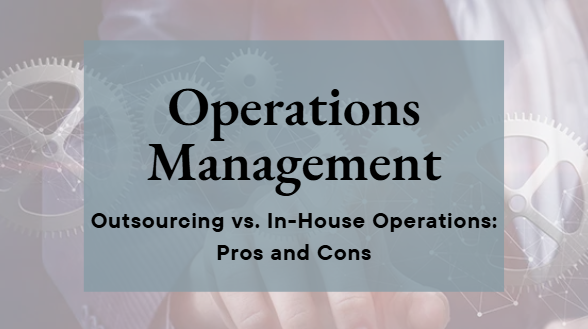
Here are answers to each of the 30 project management questions:
1. What are the key phases in the project management lifecycle?
Answers: The key phases are Initiation, Planning, Execution, Monitoring and Controlling, and Closing.
2. How do you establish project scope, and what is its significance?
Answers: Project scope defines the boundaries of the project, including deliverables, tasks, and deadlines. It’s important because it ensures all stakeholders have a clear understanding of what the project will deliver, preventing scope creep and ensuring resources are properly allocated.
3. What techniques can be used for effective stakeholder management?
Answers: Techniques include stakeholder analysis, regular communication, setting expectations, involving stakeholders in decision-making, and managing stakeholder engagement through continuous feedback.
4. How do you manage project risks and uncertainties?
Answers: Risks are managed through identification, analysis, prioritization, and developing mitigation strategies. This involves creating a risk management plan and monitoring risks throughout the project lifecycle.
5. What are the best practices for creating a project schedule?
Answers: Best practices include defining all project tasks, estimating durations, determining dependencies, creating a Gantt chart or similar scheduling tool, and regularly updating the schedule to reflect progress and changes.
6. How do you manage unplanned changes or expansions in project scope?
Answers: Scope creep is managed by having a clear project scope statement, requiring formal change requests for any scope changes, involving stakeholders in scope decisions, and regularly reviewing and updating the project plan.
7. Which tools and software are frequently utilized in project management?
Answers: Common tools include Microsoft Project, Trello, Asana, Jira, Basecamp, and Smartsheet. These tools help with task management, scheduling, resource allocation, and communication.
8. How do you ensure effective communication within a project team?
Answers: Effective communication is ensured through regular meetings, clear communication plans, using collaboration tools (like Slack or Microsoft Teams), and maintaining transparency and openness in all communications.
9. What are the critical success factors for project management?
Answers: Critical success factors include clear goals and objectives, strong leadership, stakeholder involvement, effective communication, risk management, and a well-defined project plan.
10. How do you oversee project budgets and maintain cost control?
Answers: Budget management involves detailed cost estimation, creating a budget plan, monitoring expenses against the budget, and implementing cost control measures such as regular financial reviews and variance analysis.
11. What responsibilities does a project manager have in resolving conflicts?
Answers: A project manager resolves conflicts by identifying the root cause, facilitating open communication, encouraging collaboration, mediating discussions, and finding mutually acceptable solutions.
12. How do you determine task priorities when facing multiple conflicting deadlines in a project?
Answers: Tasks are prioritized based on factors such as urgency, impact on project goals, resource availability, and dependencies. Techniques like the Eisenhower Matrix and MoSCoW method (Must have, Should have, Could have, Won’t have) are useful.
13. What strategies can be used for successful project delivery?
Answers: Strategies include clear planning, effective risk management, stakeholder engagement, regular progress monitoring, quality assurance, and flexibility to adapt to changes.
14. How do you measure the performance and progress of a project?
Answers: Performance and progress are measured using key performance indicators (KPIs), milestones, deliverables, earned value management (EVM), and regular status reports.
15. What is the importance of a project charter, and how is it developed?
Answers: A project charter formally authorizes the project, outlining objectives, scope, stakeholders, and roles. It’s developed through stakeholder collaboration and approval from project sponsors.
16. How do you conduct a project feasibility study?
Answers: A feasibility study assesses the viability of a project by analyzing technical, financial, operational, and legal aspects. It involves researching, gathering data, and evaluating alternatives.
17. What are the key components of a project plan?
Answers: Key components include project objectives, scope, timeline, milestones, resource allocation, budget, risk management plan, communication plan, and quality management plan.
18. How do you manage changes in project requirements?
Answers: Changes are managed through a formal change control process involving change requests, impact analysis, approval from stakeholders, and updating the project plan accordingly.
19. What is earned value management, and how is it applied?
Answers: Earned value management (EVM) is a method used to assess project performance and track progress. It involves comparing planned value (PV), earned value (EV), and actual cost (AC) to assess project health and forecast future performance.
20. How do you conduct a post-project evaluation?
Answers: A post-project evaluation involves reviewing project outcomes against objectives, gathering feedback from stakeholders, analyzing performance data, identifying lessons learned, and documenting best practices and areas for improvement.
21. What is the significance of risk assessment in project management?
Answers: Risk assessment identifies potential threats to the project’s success and allows for proactive planning to mitigate or avoid risks, ensuring smoother project execution and better outcomes.
22. How do you ensure project alignment with business objectives?
Answers: Alignment is ensured by clearly understanding business goals, involving key stakeholders in project planning, regularly reviewing project progress against objectives, and adjusting the project plan as needed to stay on track.
23. What methods are used for effective project resource management?
Answers: Methods include resource allocation planning, capacity planning, resource leveling, using resource management tools, and regularly monitoring and adjusting resource usage to optimize efficiency.
24. How do you handle project delays and get back on track?
Answers: Delays are handled by identifying the cause, assessing the impact, developing a recovery plan, reallocating resources if necessary, and communicating with stakeholders to manage expectations and ensure support.
25. What is Agile project management, and how does it differ from traditional methodologies?
Answers: Agile project management is a cyclical method that focuses on adaptability, teamwork, and customer input. It differs from traditional methodologies by focusing on adaptive planning, continuous improvement, and delivering value in small increments.
26. How do you manage a remote project team effectively?
Answers: Managing a remote team involves clear communication, using collaboration tools, setting expectations, regular check-ins, fostering team bonding, and ensuring access to necessary resources and support.
27. What are the common challenges in project management, and how do you overcome them?
Answers: Common challenges include scope creep, resource constraints, communication issues, and risk management. Overcoming these challenges involves clear planning, stakeholder engagement, effective communication, and proactive risk management.
28. How do you foster collaboration and teamwork in a project environment?
Answers: Collaboration is fostered through team-building activities, clear communication, establishing a shared vision, encouraging open feedback, and using collaboration tools to facilitate interaction and information sharing.
29. How does technology contribute to contemporary project management practices?
Answers: Technology enhances project management by providing tools for planning, scheduling, communication, collaboration, risk management, and performance tracking, leading to more efficient and effective project execution.
30. How do you promote ongoing enhancement in project management methodologies
Answers: Continuous improvement is ensured through regular post-project evaluations, gathering feedback, implementing lessons learned, staying updated with industry best practices, and fostering a culture of learning and development within the project team.
These answers provide a comprehensive understanding of project management concepts and practices.

